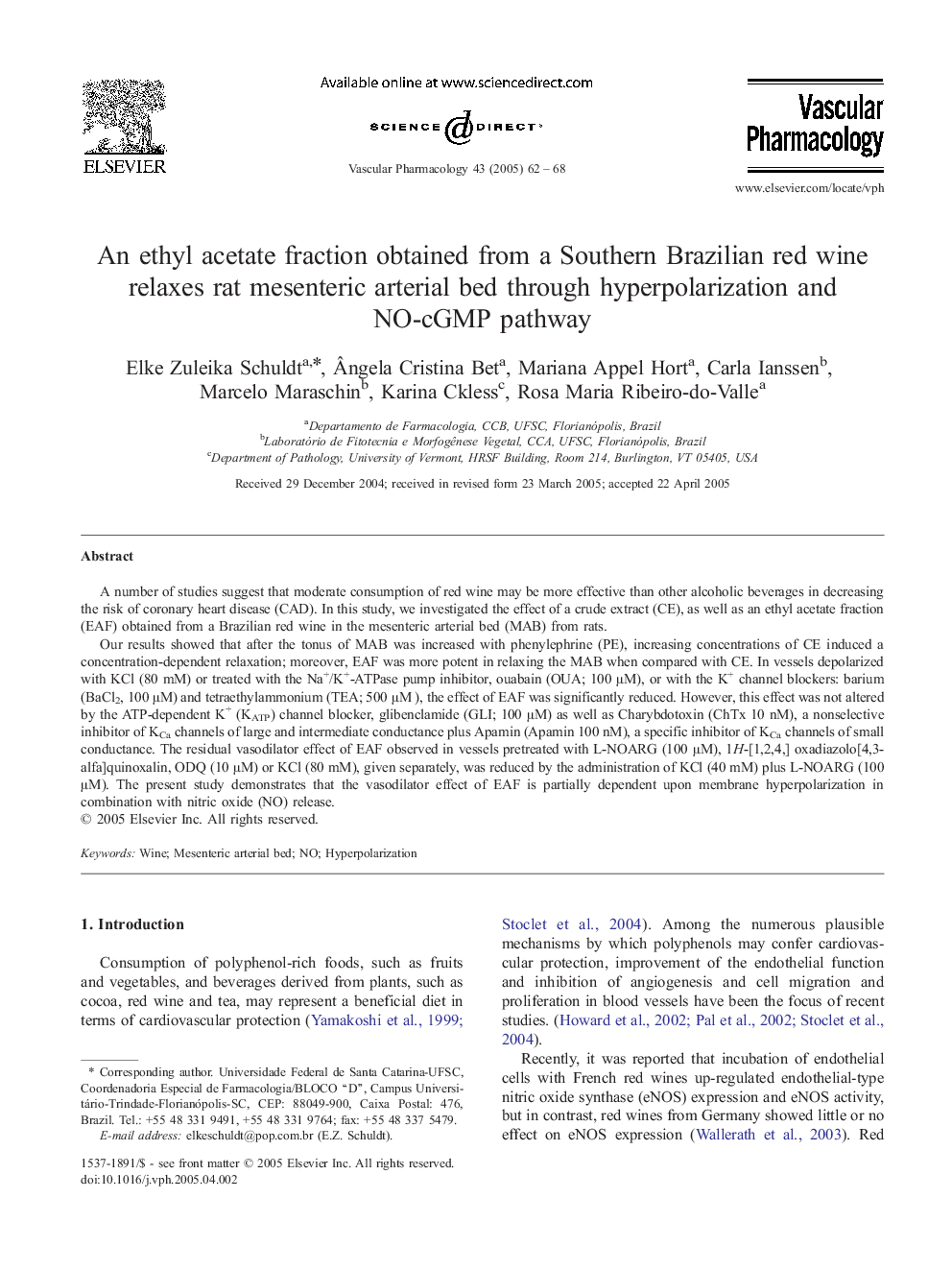| Article ID | Journal | Published Year | Pages | File Type |
|---|---|---|---|---|
| 9020823 | Vascular Pharmacology | 2005 | 7 Pages |
Abstract
Our results showed that after the tonus of MAB was increased with phenylephrine (PE), increasing concentrations of CE induced a concentration-dependent relaxation; moreover, EAF was more potent in relaxing the MAB when compared with CE. In vessels depolarized with KCl (80 mM) or treated with the Na+/K+-ATPase pump inhibitor, ouabain (OUA; 100 μM), or with the K+ channel blockers: barium (BaCl2, 100 μM) and tetraethylammonium (TEA; 500 μM ), the effect of EAF was significantly reduced. However, this effect was not altered by the ATP-dependent K+ (KATP) channel blocker, glibenclamide (GLI; 100 μM) as well as Charybdotoxin (ChTx 10 nM), a nonselective inhibitor of KCa channels of large and intermediate conductance plus Apamin (Apamin 100 nM), a specific inhibitor of KCa channels of small conductance. The residual vasodilator effect of EAF observed in vessels pretreated with L-NOARG (100 μM), 1H-[1,2,4,] oxadiazolo[4,3-alfa]quinoxalin, ODQ (10 μM) or KCl (80 mM), given separately, was reduced by the administration of KCl (40 mM) plus L-NOARG (100 μM). The present study demonstrates that the vasodilator effect of EAF is partially dependent upon membrane hyperpolarization in combination with nitric oxide (NO) release.
Related Topics
Health Sciences
Medicine and Dentistry
Cardiology and Cardiovascular Medicine
Authors
Elke Zuleika Schuldt, Ãngela Cristina Bet, Mariana Appel Hort, Carla Ianssen, Marcelo Maraschin, Karina Ckless, Rosa Maria Ribeiro-do-Valle,
